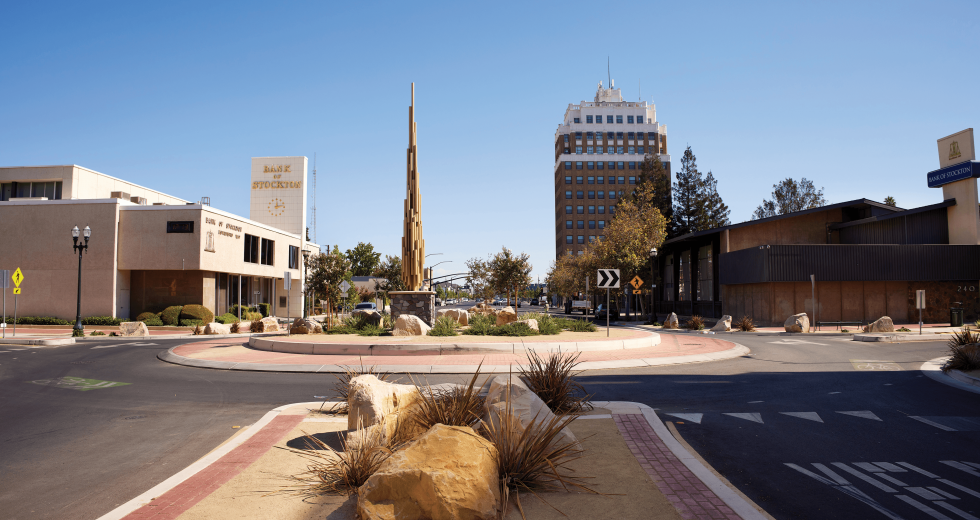Jason Kline and his wife, Cecilia Yi, knew they had found the right location for their first School of Rock when they saw the two-story, former Odd Fellows building on a corner of Elk Grove Boulevard in the old part of town. The setting suited the local franchise, which began offering private music lessons and band practices, along with musical instruments for sale, when the business opened in 2017.
Old Town Elk Grove’s resurgence attracted the couple, who saw an opportunity as both real estate investors and business owners. “(We) have always had a great interest in historic infill developments and believe in restoring them to their former glory,” Kline says. “Although a lot of these projects don’t immediately pencil out in terms of ROI, with much persistence and passion they are a great investment for the long-term gain and greater community impact.”
The entrepreneurs later opened a second location on Vernon Street in downtown Roseville, another historic area experiencing a rebirth. The third School of Rock opened in 2020 on Fair Oaks Boulevard in Carmichael, noticeable by a purple Volkswagen bus often parked outside.
Elk Grove’s School of Rock has far exceeded their expectations, Kline says. Elk Grove Economic Development Director Darrell Doan says children and adults come downtown every evening to attend the music school. For Doan, the business’s success illustrates a major shift for the neighborhood, once home to the former stagecoach stop and hotel that first put Elk Grove on the map in 1850.
“There are some great businesses down there already — the barber shop where I get my hair cut, some antique shops, some of those clothing stores, Boulevard Bistro and Brick House Restaurant,” Doan says. “There’s some good pieces we want to build on. You have to be careful with historic districts too. We don’t want it to be a tourist destination where you go to experience old-timey, wallow in nostalgia for the good old days. We want modern uses blended in a historic context.”
The City of Elk Grove has engaged in a multiyear effort to preserve that history, while reimagining its oldest commercial corridor, giving residents more shopping options on their way to dinner within walking distance, perhaps with a festival to enjoy afterward and a nightcap at a brewery down the street.
Cities throughout the Capital Region are taking aging and forgotten corridors — most of them historically commercial and retail-based — and making them more desirable places. This effort is especially critical as customer retail spending continues its move from brick-and-mortar to online. Case in point: Over a third of all online products bought or sold online in the U.S. go through Amazon, according to a 2020 report by Stantec on how shopping has changed over the past century. Additionally, millennials are more likely to shop online than in physical stores. Just as struggling malls have been forced to pivot in recent years and as small mom-and-pop stores have adapted during the pandemic, so too have city governments found themselves reimagining commercial corridors in new ways, so that they offer both economic and social benefits.
Roseville: three corridors transforming
Some of Roseville’s major gateways into its city are, frankly, not very attractive. Drivers exit Douglas Boulevard from Interstate 80 to large roads and traffic, aging infrastructure and big parking lots.
Development occurred around the Douglas Boulevard, Sunrise Avenue and Harding Boulevard area in the 1950s and ’60s, during the rise of American car culture. “You’re looking at commercial areas that instead of being right up on the street, are set way to the back behind a very large parking lot — these days, many of which are empty most of the time or underused,” says Roseville Senior Planner Lauren Hocker. “Those were all built-out during an era when the car was the thing you planned for.”
Another gateway leads to the oldest part of town along Atlantic Avenue, adjacent to Roseville’s large rail yard, a lasting ode to the industry that prompted the city’s incorporation in 1909 — a city once called Junction because of its location along rail lines — and spurred subsequent decades of growth.
Since May 2021, the City of Roseville has been laying the groundwork to reinvigorate these three commercial corridors — Douglas and Harding boulevards, Douglas Boulevard and Sunrise Avenue, and Atlantic Street — by developing specific plans that contain design guidelines for commercial reinvestment (new landscaping, window replacements and other cosmetic changes); commercial redevelopment (construction, expansion or replacement of buildings); and multifamily housing (allowing residential as a permitted use of commercial property). Roseville City Council is expected to vote on these plans in November.
“The focus of planning now is on trying to make streetscapes look attractive, bringing buildings forward to the streets so you can easily walk to them and create a community environment, and not just a place for people to drive to get their stuff.”
Lauren Hocker, Roseville senior planner
Modern planning now focuses on elements beyond brick-and-mortar retail and commercial. Community events, alternative transportation with safe travel for pedestrians and bicyclists, and redesigned streetscapes with drought-tolerant landscaping have become central considerations. “The focus of planning now is on trying to make streetscapes look attractive, bringing buildings forward to the streets so you can easily walk to them and create a community environment, and not just a place for people to drive to get their stuff,” Hocker says.
Additionally, these specific plans could accommodate up to 850 new multifamily residential units. More people living nearby means more customers and more vibrancy in areas where businesses typically close earlier in the evening. Businesses and property owners should then have more money to reinvest into their own improvements. “The more people are activating those spaces,” Hocker says, “the more those spaces can be improved and enjoyed by the entire community.”
Stockton: Miner Avenue facelift
In the early 1840s, an immigrant from France named Charles M. Weber acquired about 47,000 acres of land on the east side of the San Joaquin River. Weber is considered the founder of Stockton, which became a chartered city in 1850; the following year, he deeded all the streets, channels and public squares of his settlement to the burgeoning city, according to “An Illustrated History of San Joaquin County, California,” published in 1890.
Soon, Stockton’s downtown began taking shape, including the important thoroughfare of Miner Avenue, where churches, service stations and automobile shops, hotels, ice cream shops, construction and building supply firms and other businesses once thrived. Locals considered Miner Avenue one of Stockton’s most vibrant streets — until disinvestment in the city’s downtown contributed to its downturn.
“Although downtowns are experiencing a resurgence, from 1975 into the 2000s, downtowns were abandoned and the migration of commerce and leisure activities went from city centers to the suburbs or the outer ring of a community’s central business district,” says Stockton City Manager Harry Black. “However, this trend appears to be reversing itself, with renewed interest in our downtowns. There is greater interest in the socialization possibilities that downtowns present.”
Construction of the $18.4 million Miner Avenue Complete Street project kicked off in September 2020 and was completed in March 2022. It involved repaved roads, a roundabout to calm traffic, more parallel parking and buffered bicycle lanes, drought-tolerant landscaped medians, decorative benches, and the reduction of car lanes from two to one in each direction. The improvements extend from Weber Point Events Center to the entry of the Robert J. Cabral Station, operated by Amtrak.
The complete streets concept refers to smart growth where streets are designed to be accessible for everyone and various modes of transportation. Proponents say complete streets can stimulate economic growth because these areas better accommodate storefronts, restaurants, outside dining and housing all in a walkable or biking environment.
“People are able to see change happen. Miner represents the best of urban planning and design,” Black says. “It is something that we can be proud of and build upon in terms of community pride and optimism. Miner Avenue adds to the critical mass necessary to transform our downtown, which ultimately will add to our overall city transformation efforts.”
Sacramento: equity and inclusion prioritized
With its Stockton Boulevard Plan, the City of Sacramento is working with community members on revitalizing the 4.5-mile corridor in a manner that benefits existing residents and businesses, rather than making change at their expense. More than 1,600 residents live and 12,000 jobs exist within a five-minute walking distance of the boulevard.
“We’re really focusing resources, time, money on: What can we do to prevent the current folks from being displaced?” says Sacramento Senior Planner Elizabeth Boyd. “How can we help them to take advantage of the economic opportunities that are coming to Stockton Boulevard?”
Workforce and economic development, housing, streetscape improvements, financial empowerment, equity and anti-displacement measures (for example, assistance with rent or home repairs) top the priority list for this specific plan, a working version of which has been released to the public. Sacramento City Council is expected to vote on the plan next year.
Stockton Boulevard was once a major transportation corridor connecting Sacramento to Stockton. It also had a streetcar service. Inevitably, change came, like when Highway 99 was built in 1961, redirecting traffic away from the boulevard, although it remains today a heavily traversed thoroughfare between East Sacramento and south Sacramento.
Elk Grove’s Dust Bowl brewing company, located in a former depot
building, is an example of the adaptive reuse projects bringing
life back to the city’s Old Town neighborhood. (Photo by Jordan
Kazemi, courtesy of D&S Development)
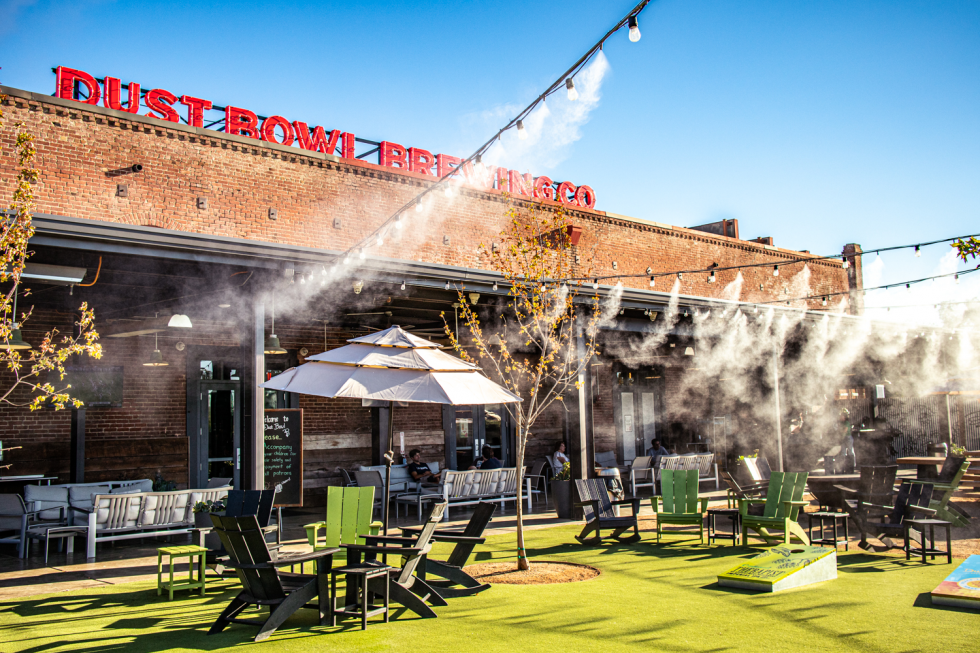
Another project to undoubtedly alter the area is the development of UC Davis’ Aggie Square, a mixed-use innovation district adjacent to its medical center. The project will bring over 1 million square feet of state-of-the-art research, wet labs, commercial space and housing in phase 1, which has a capital investment of $1.1 billion, according to the university.
But Aggie Square has also brought concern for neighbors and businesses unsure how an influx of new growth could affect them. “As much as we want to revitalize our commercial corridors, we have to be sensitive to the fact that revitalization can cause negative impacts,” Boyd says, adding, “So much of what we’re doing is closely tied to race and we’re being very explicit in saying this is something important to us.”
The project’s pilot Community Ambassador Program includes representatives from local Vietnamese, Chinese, Spanish and Black communities, who are improving dialogue between residents and city officials — and trying to ensure equitable outcomes.
Sacramento native Conrad Crump, the Black ambassador, says the program reaches certain demographics historically precluded from participating in civic life in a meaningful way due to language, cultural or other systemic barriers.
“We have monthly meetings that provide space for a two-way conversation to really hear about the opportunities that are shared with the community, and also for the city to be able to hear and learn about issues and challenges that are very real issues for various communities,” he says.
Crump says the city provides ambassadors with a toolkit to streamline and simplify government information, which they can then spread through email, social media or even fliers, like at a local barber shop.
Old Town Elk Grove: stimulating investment
Darrell Doan has been Elk Grove’s economic development director since 2015, having arrived after stints in Baltimore and Alameda. He quickly realized that Old Town Elk Grove could use a shot of adrenaline.
“When I got here, it was pretty clear to me that it was an underperforming retail center,” he says. From a merchandising standpoint, Old Town lacked an adequate mix of retailers. Unlike a shopping mall where the landlord makes leasing decisions based on creating the right overall tenancy, in a historic district, buildings typically have different owners with varying motivations, capabilities and sources of capital, Doan says. That explains why Old Town has several hair and nail salons, but needs more coffee shops and sandwich spots, fitness boutiques like cycling or yoga studios, and national credit tenants.
The district, however, has good bones, and now improved streetscape thanks to recent investment by the city in attractive benches, nice sidewalks, crosswalks, landscaping, lighting and the construction of Old Town Plaza, a 47,000-square-foot open air venue. Additionally, a new library is in its design phase.
The city is working on an incentive program to get landlords to install sprinklers, replace old windows and make utility upgrades — modifications that allow modern uses to plug into older buildings. The next step is encouraging merchants and landlords to organize themselves into a merchants association and a business improvement district, which requires the property owners to petition the city to tax themselves and then dedicate those revenues toward signage, lighting, pressure washing, docents and other measures to keep the area clean and safe.
The city’s boldest move, as the private sector failed to drive enough investment, was its purchase several years ago of distressed properties, and then partnering with D&S Development, which specializes in adaptive reuse and historic rehabs, to develop the sites. This Railroad Street Redevelopment Project includes Dust Bowl Brewing Company (in a renovated former depot building), the Railroad Courtyards development (17 residential for-rent bungalows) and a new restaurant concept from the owner of LowBrau in Midtown Sacramento (also in a renovated depot building).
“These are examples of the strategy working right,” Doan says. “A neighborhood that didn’t have the right mix of tenants to create a critical mass, a city that saw we can influence that by doing a couple of our own projects and then hoping the private investment would follow. We are seeing that happen.”
–
Stay up to date on business in the Capital Region: Subscribe to the Comstock’s newsletter today.
Recommended For You
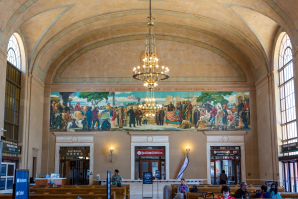
Safeguarding Sacramento’s Historic Architecture
Architects, preservationists and historians work together to adaptively reuse Sacramento’s historic resources
Preservation projects are being embraced in the Capital
Region in an effort to preserve history and protect the
environment.
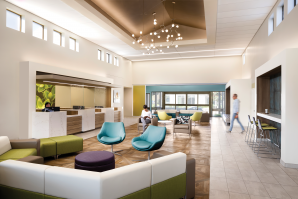
Healing Grounds
Today’s health care architecture provides a holistic, calming environment
Stark and sterile health care buildings are falling by the
wayside as architecture firms design for a more
supportive patient experience.
Sponsored
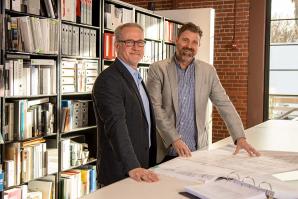
Transforming Environments of Health
HGA
HGA, an interdisciplinary design firm with offices nationwide, provides architectural design and all disciplines of engineering. In Sacramento and throughout Northern California, the firm offers architecture, structural engineering, mechanical engineering, plumbing engineering and interior design.

How to Build Out of a Pandemic
The commercial construction industry quickly adapted during the pandemic and continues to adjust its practices.

The Granny Flat Has a New Name
Architects are teaming with local jurisdictions to include accessory dwelling units and tiny houses in the affordable housing conversation.
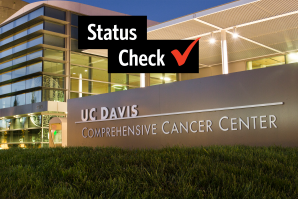
A Comprehensive Effort
UC Davis Comprehensive Cancer Center looks to leverage recent $17.5 million federal grant
Factoring in local matches, a common requirement for federal grant awards, the money could go much further.



